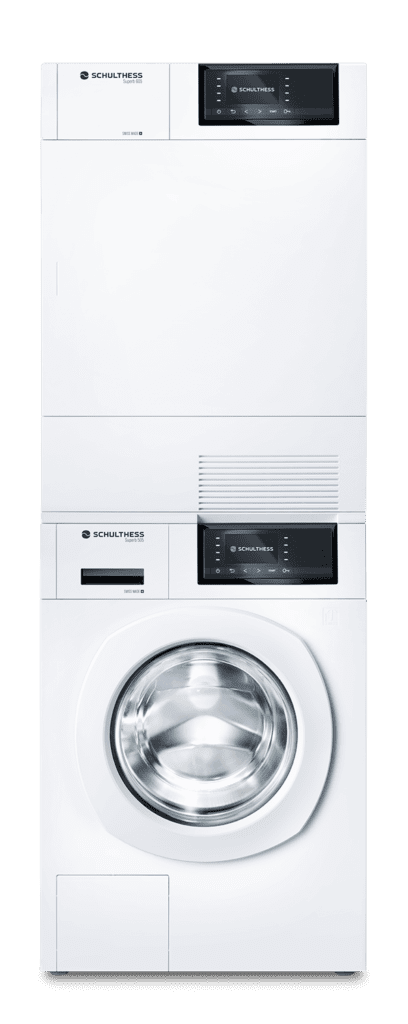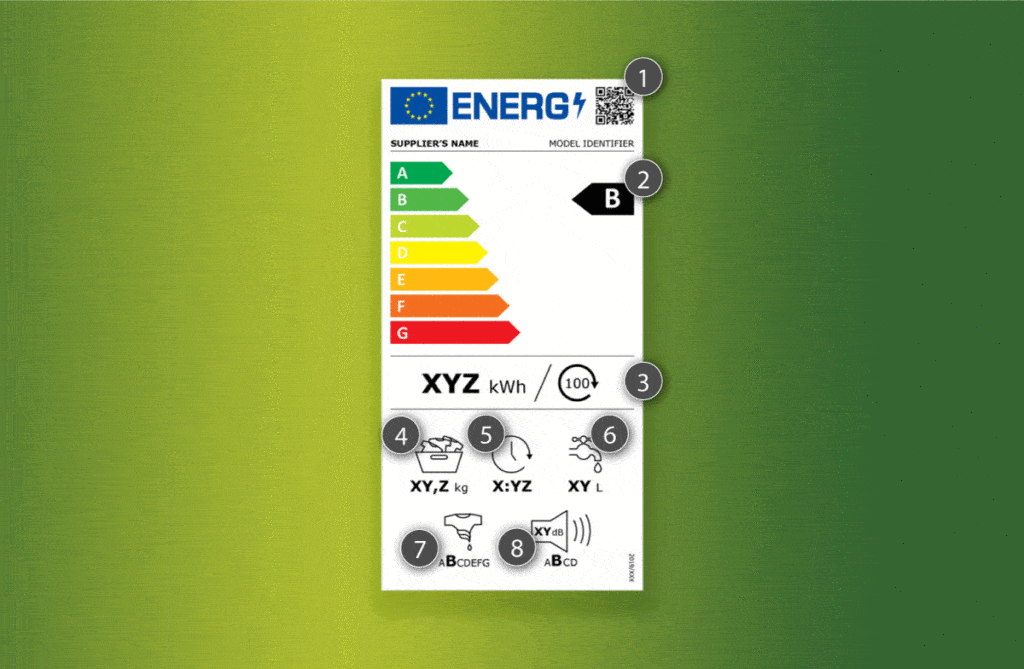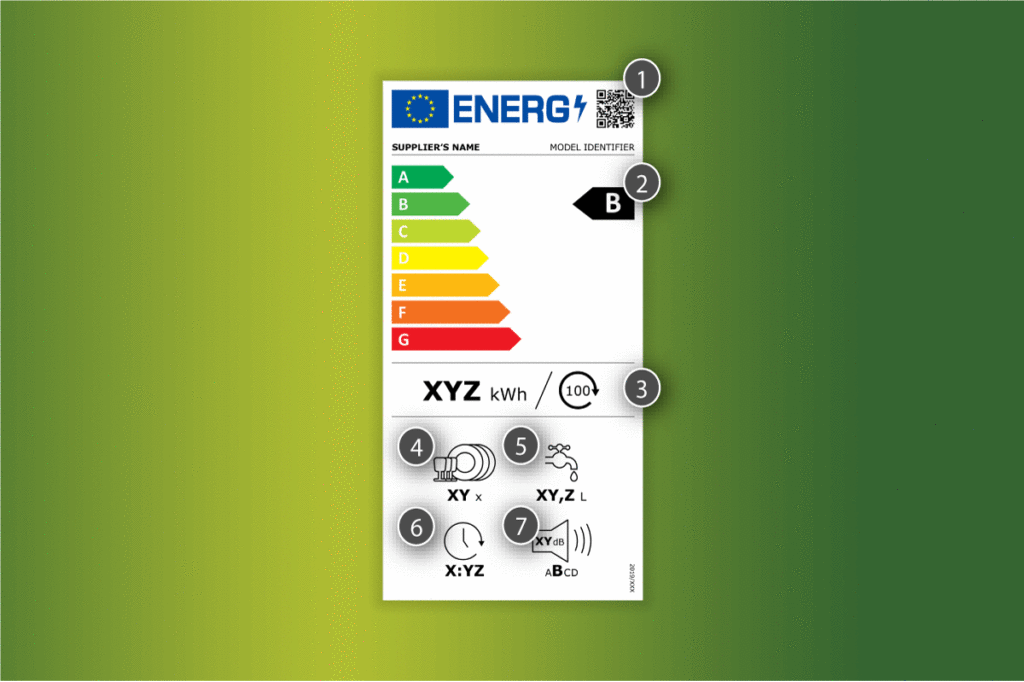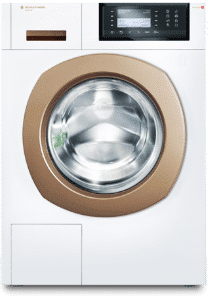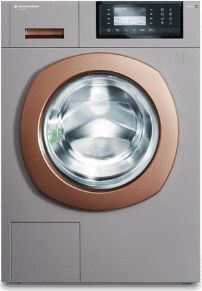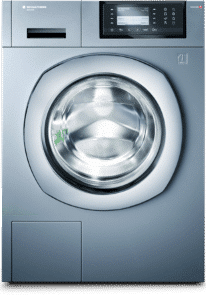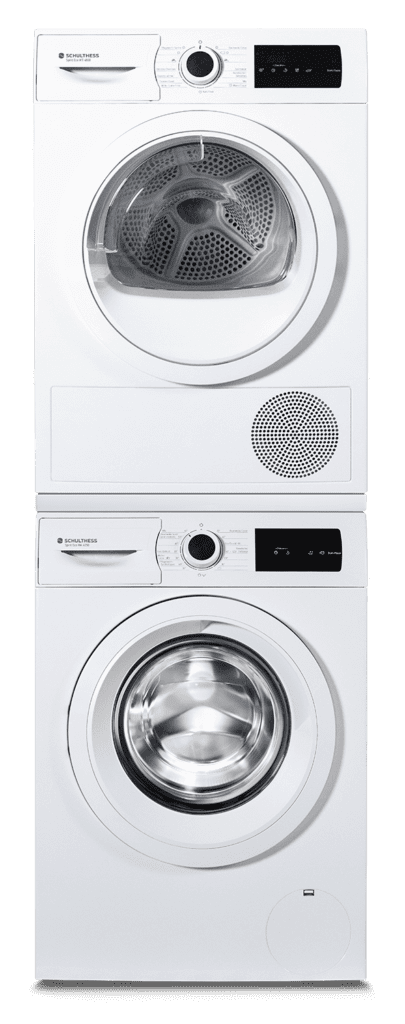One of the most important changes to the energy label for washing machines concerns the change in the test programme to which all label values refer. For example, energy consumption is based on only 100 washing cycles.. In addition, the Eco 40–60* programme is now measured. This programme is suitable for washing normally soiled textiles made of cotton, linen or mixed fabrics (also in combination), which can be washed at 40°C or 60°C according to the care symbols. The Eco 40–60 programme is the most efficient programme in the combination of energy and water consumption.
Legend:
1. QR code (optional in CH)
2. Energy efficiency class**
3. Weighted energy consumption** in kWh/100 operating cycles (in the Eco 40–60 programme)
4. Maximum load
5. Duration of the Eco 40–60 programme
6. Weighted water consumption** in litres/operating cycle (in the Eco 40–60 programme)
7. Spinning efficiency class**
8. Noise emissions during the spinning cycle, expressed in dB(A) re 1 pW and noise emission class**
*Eco 40–60: To achieve the best energy efficiency, an optimal washing temperature is defined for the programme. This temperature cannot be changed by consumers. The actual washing temperature is indicated in the instructions for use and may differ from the selected washing temperature for energy-saving reasons, depending on the washing machine’s load. The washing effect corresponds to the legal requirements.
** Values are a combination of quarter-, half- and full-load wash cycles
